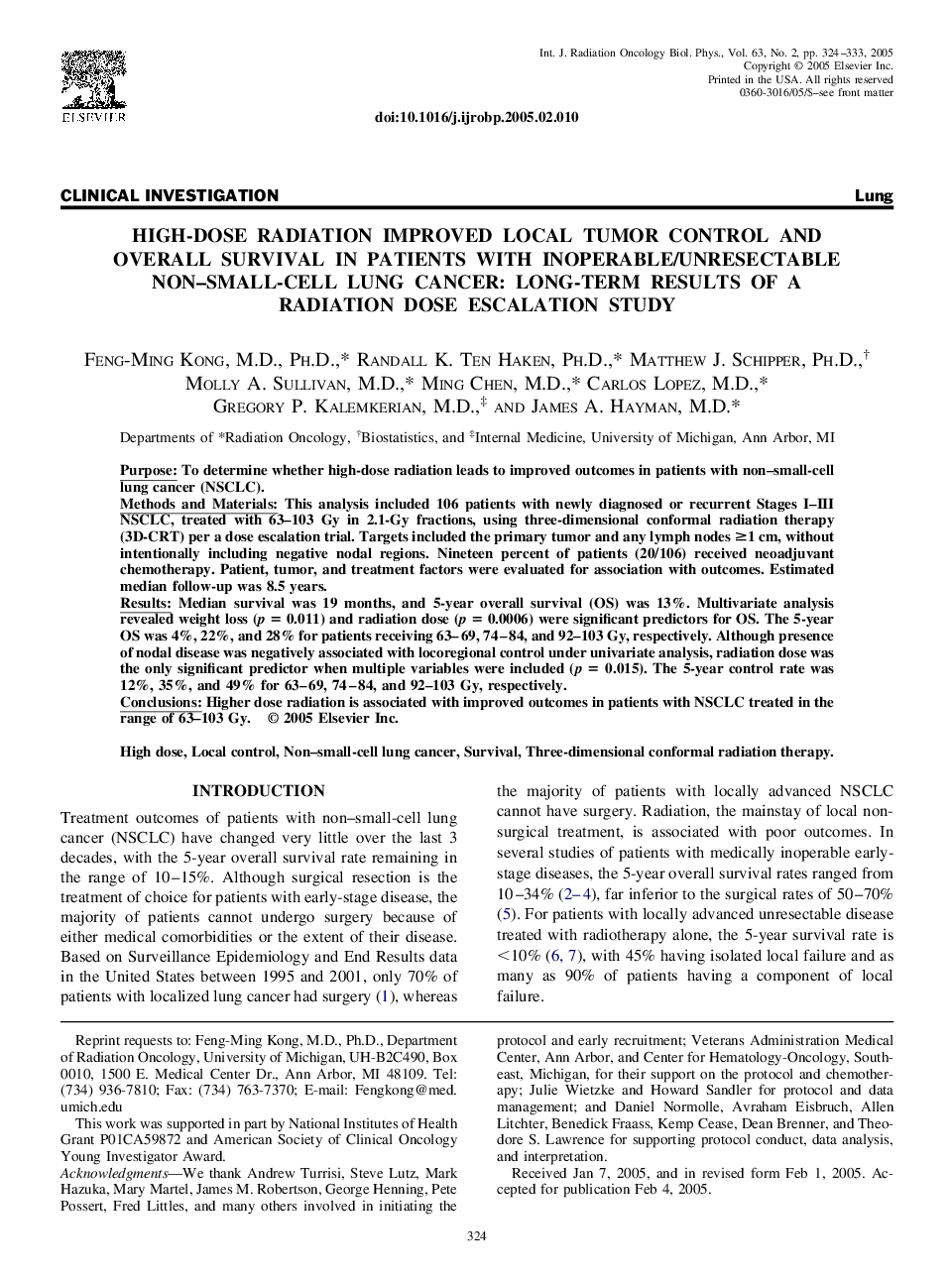| Article ID | Journal | Published Year | Pages | File Type |
|---|---|---|---|---|
| 9872099 | International Journal of Radiation Oncology*Biology*Physics | 2005 | 10 Pages |
Abstract
Purpose: To determine whether high-dose radiation leads to improved outcomes in patients with non-small-cell lung cancer (NSCLC). Methods and Materials: This analysis included 106 patients with newly diagnosed or recurrent Stages I-III NSCLC, treated with 63-103 Gy in 2.1-Gy fractions, using three-dimensional conformal radiation therapy (3D-CRT) per a dose escalation trial. Targets included the primary tumor and any lymph nodes â¥1 cm, without intentionally including negative nodal regions. Nineteen percent of patients (20/106) received neoadjuvant chemotherapy. Patient, tumor, and treatment factors were evaluated for association with outcomes. Estimated median follow-up was 8.5 years. Results: Median survival was 19 months, and 5-year overall survival (OS) was 13%. Multivariate analysis revealed weight loss (p = 0.011) and radiation dose (p = 0.0006) were significant predictors for OS. The 5-year OS was 4%, 22%, and 28% for patients receiving 63-69, 74-84, and 92-103 Gy, respectively. Although presence of nodal disease was negatively associated with locoregional control under univariate analysis, radiation dose was the only significant predictor when multiple variables were included (p = 0.015). The 5-year control rate was 12%, 35%, and 49% for 63-69, 74-84, and 92-103 Gy, respectively. Conclusions: Higher dose radiation is associated with improved outcomes in patients with NSCLC treated in the range of 63-103 Gy.
Keywords
Related Topics
Physical Sciences and Engineering
Physics and Astronomy
Radiation
Authors
Feng-Ming M.D., Ph.D., Randall K. Ph.D., Matthew J. Ph.D., Molly A. M.D., Ming M.D., Carlos M.D., Gregory P. M.D., James A. M.D.,
